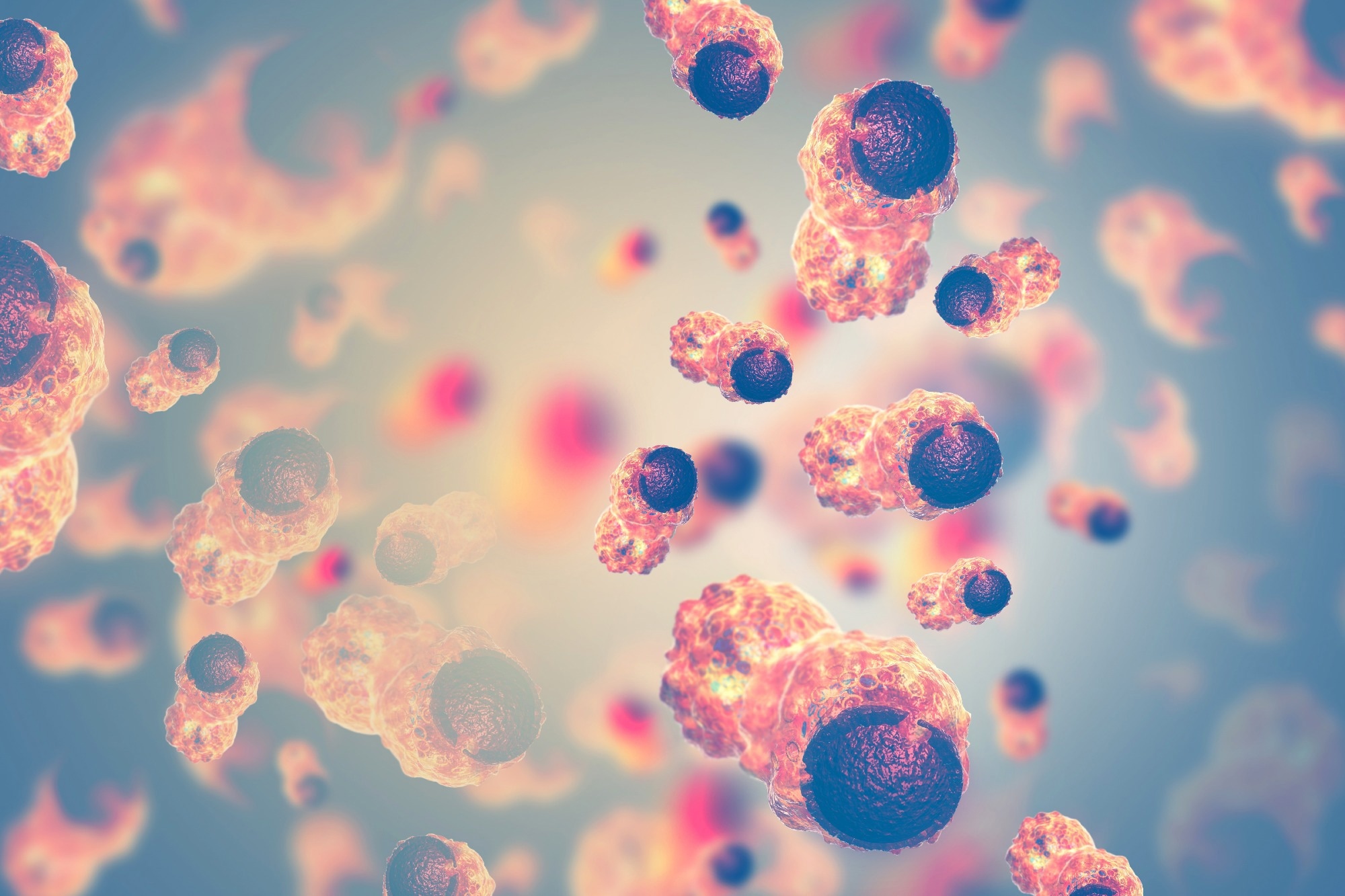A recent study published in Nature’s Scientific Reports described a lipidic peptide, named IK14004, which fosters the growth of immunosuppressive T regulatory (Treg) cells and separates interleukin-2 production from interferon-gamma, while also activating CD8+ T cells.
 Study: An immunomodulating peptide with potential to suppress tumour growth and autoimmunity. Image Credit: crystal light/Shutterstock.com
Study: An immunomodulating peptide with potential to suppress tumour growth and autoimmunity. Image Credit: crystal light/Shutterstock.com
Background
Cancer treatment has taken an important step forward with the advent of novel immunotherapies. However, it carries the grave risk of indiscriminate autoimmunity directed against other tissues.
Autoimmune disease has been reported to be aggravated by immune checkpoint inhibitors (ICIs), though the latter restricts immune evasion by tumor cells owing to T-cell exhaustion.
ICIs promote autoimmunity by inhibiting the immune checkpoints that regulate T-cell exhaustion, such as the programmed cell death-1 (PD-1) checkpoint. Therefore, PD-1 inhibitors work to restore exhausted CD4+ tumor-infiltrating lymphocytes (TILs) to their former helper phenotype, increasing the production of interferon-gamma (IFN-γ).
IL-12
IL-2 and IL-12 are cytokines that activate cytotoxic CD8+ T cells and natural killer (NK) cells. IL-12 is a heterodimer existing as two isoforms, IL-12p40 and IL-12p70, the latter being less abundant. It is activated via the IL-12 receptor with IL-12Rβ1 and IL-12Rβ2 chains, which are key to downstream signal transduction.
IL-12p40 binds to the former to suppress IL-12p70-mediated signaling, but the latter acts via IL-12Rβ2 to activate the signal transducer and activator of the transcription-4 (STAT4) pathway, producing positive feedback on this receptor subunit. When activated by type 1 IFNs, STAT4 induces IFN-γ production in NK cells.
IL-12 and type 1 IFNs are essential for normal T cell effector function. IL-12 is produced in antigen-presenting cells and powerfully induces IFN-γ production by T and NK cells, causing IL-12p40 transcription.
The cell’s responsiveness to IL-12p70 is regulated primarily via the IL-12Rβ2 subunit. This isoform regulates autoimmune inflammation but also promotes CD8+ cell-mediated cytotoxicity. It protects against autoimmunity and cancer in rat models.
Thus, IL-12p70 induces Treg expansion while the other isoform suppresses them.
IL-2
IL-2 comes from activated CD4+ cells and rejuvenates exhausted T cells. Along with its high-affinity IL-2Ra/CD25 receptor subunit, IL-2 leads to effector cytolytic T cells differentiating from naïve CD8+ T cells. It denotes a cytotoxic effector phenotype and markedly increases IL-2 affinity. This subunit is upregulated in T cells by IL-2 or TCR activation.
IL-2 upregulates NK cells' IL-12 receptors (IL-2R), promoting IL-12-dependent signaling. Activated NK cells produce tumor lysis by natural and antibody-mediated cellular cytotoxicity. IL-12R signaling also causes increased NKG2D expression on NK and CD8+ T cells, promoting tumor lysis.
The present study looks at a novel peptide reported earlier by the same researchers, IK 14004, that acts in an IL-2-like manner to cause Treg expansion and, thus, immunomodulation.
IK-14004 also causes CD8+ T cell activation with NKG2D expression but simultaneously prevents the production of IL-2 but not IFN-γ from these cells. IFN-γ may suppress or enhance tumor growth depending on the tumor microenvironment.
Finally, the peptide increases IL-12p70 production from T cells rather than IL-12p40. These activities contribute to the regulation of autoimmune phenomena.
The current study thus examined how IK-14004 affected rat models of Lewis lung cancer (LLC) and the changes in immune cell receptor expression.
What did the study show?
The current study found that when IK-14004 was used in LLC, it suppressed or reduced cancer growth while rejuvenating the exhausted splenocyte-derived subset of CD4+ T cells.
This was demonstrated by significantly higher levels of IFN-γ and IL-2, with CD25 and the cell proliferation surface marker Ki67 in these cells following restimulation.
When incubated with healthy immune cells, this peptide reduced the surface expression of T cell receptor (TCR) α/β subunits. Both IL-2 and IL-12 receptors were upregulated in splenocyte-derived T and NK cells, but only CD4+ rather than CD8+ T cells.
Both T and NK cells showed a peptide-dependent change in the ratio of the IL-12 receptor β1/β2 chains independent of TCR activation status in both CD4+ and CD8+ T cells. It also enhanced IL-12p70 production by T cells.
The peptide promoted the expression of type 1 IFN and a cytotoxic NK cell phenotype, as shown by the appearance of NKG2D/NKp44 receptors. It also activates the STAT4 pathway in T cells. Moreover, K562 expression on CD8+ T cells was upregulated, indicating enhanced cytotoxicity of these cells.
What are the implications?
IK-14004 inhibits cancer progression and restores exhausted CD4+ T cells, an important effect since both CD4+ and CD8+ T cells show exhaustion in the rat lung cancer model.
Multiple factors may be in play to achieve this effect, including CD4+ TCR-mediated promotion of IL-12 signaling to induce IFN-γ and peptide-mediated NK cell activation.
This leads to tumor lysis, as suggested by the increased expression of IL-12Rβ2 and enhanced CD25 expression in NK cells, though the latter may be due to IL-2 signaling.
Since Tregs take up IL-12 via IL-12Rβ2, less of it is available to the Th1 effector cells and simultaneously promotes immunomodulation via Tregs. This could help suppress Th1-linked autoimmunity. “This serves to highlight the important role of IL-12Rβ2 in the regulation of IL-12 responsiveness.”
“This novel peptide offers an opportunity to gain further insight into the complexity of ICI immunotherapy.” Using these findings, further progress may be made into developing an immunomodulatory peptide that reduces autoimmune responses while averting the emergence of immune evasion by tumor cells. Future research is needed since rat models do not accurately reflect human immunology.